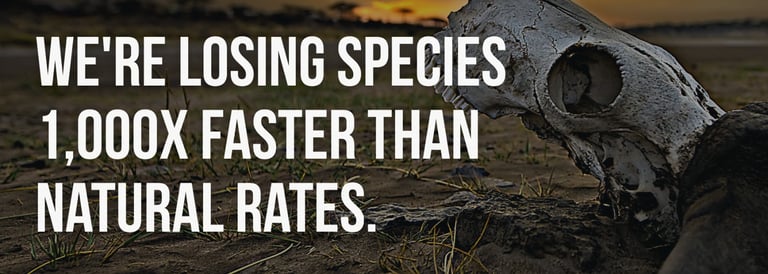young@assuredfuture.tech (Assured Future Company www.assuredfuture.tech)
© 2025. All rights reserved.
Large-Scale Cooling Structure to Mitigate Global Warming
This was originally going to be presented in Las Vegas on May 15th.


But it was changed into a virtual conference.


I applied to another conference. My abstract was accepted.


But this one was also changed to a virtual conference.


Here is the patent-pending technology I've been trying to present to the world:
I’m not going to focus on cutting down carbon emissions, because everyone else is already talking about it. I’m not saying not to continue. I’m just going to talk about something that will cool the planet now. I’ll start by talking about what would happen if we don’t do that, and what would happen if we did.
Without this technology: Melting polar ice sheets and glaciers, along with the thermal expansion of seawater, contribute to rising sea levels. This threatens coastal cities and islands. [Reference: IPCC Special Report on the Ocean and Cryosphere in a Changing Climate (https://www.ipcc.ch/srocc/)]
This technology would prevent the ongoing melting of the polar ice caps, glaciers, and permafrost. This would stabilize sea levels, reducing the risk of flooding in low-lying coastal areas and preserving freshwater resources stored in glaciers. Coastal cities like Miami, New York, and Tokyo, as well as many island nations, would avoid the catastrophic effects of rising sea levels.
Without this technology: Rising temperatures increase the frequency and intensity of extreme weather events such as hurricanes, droughts, heatwaves, and floods, causing damage to ecosystems, economies, and human lives. For example, more severe hurricanes and heatwaves have been linked to higher mortality rates. [Reference: IPCC Sixth Assessment Report (https://www.ipcc.ch/report/ar6/wg1/)]
With this technology: A cooler climate would reduce the intensity and frequency of extreme weather events such as hurricanes, droughts, and heatwaves. This would save lives, prevent economic losses, and reduce the strain on emergency services.
Without this technology: Ecosystem Disruption. Warming temperatures lead to shifts in ecosystems. Species that cannot adapt to new climates face extinction, while invasive species may thrive, leading to loss of biodiversity, with consequences for food chains, agriculture, and ecosystem services. [Reference: Effects of Climate Change on Ecology (https://scied.ucar.edu/learning-zone/climate-change-impacts/ecology)]
With this technology: Stabilizing the climate would prevent many species from being pushed to extinction or forced to migrate due to shifting temperatures. Biodiversity would be preserved, which is crucial for the resilience of ecosystems and the provision of ecosystem services (e.g., pollination and water filtration). This would help maintain a balance in natural food webs.
Without this technology: Changes in agriculture and food security. Climate change affects precipitation patterns, temperature extremes, and soil quality, which in turn affects crop yields and livestock. This means crop failures, water scarcity, food price volatility, and global hunger. [Reference: FAO on Climate Change and Food Security (https://www.fao.org/climate-change/en)]
With the technology: By stabilizing temperatures and restoring predictable weather patterns, agriculture would benefit from more stable growing seasons and fewer extreme events like droughts or floods. Crop yields could increase or stabilize, ensuring food security. This would also reduce the risk of famine in vulnerable regions and reduce the need for costly agricultural adaptations.
Without this technology: Changes in precipitation patterns and the depletion of glaciers reduce freshwater availability, leading to increased competition for water resources, affecting drinking water supplies, agriculture, and energy production. [Reference: UN-Water: Water and Climate Change (https://www.unwater.org/water-facts/water-and-climate-change)]
Using this technology would stabilize precipitation patterns, reducing the likelihood of both droughts and extreme flooding events. Freshwater supplies, especially from glaciers and seasonal snowmelt, would be more predictable, which is crucial for agriculture, drinking water, and industrial uses. This would be particularly beneficial for regions dependent on glacial runoff, such as parts of Asia, the Andes, and the Himalayas.
Without this technology: Health risks. Higher temperatures and extreme weather events create new challenges for public health. Heatwaves and the spread of vector-borne diseases are expected to increase. In other words, increased mortality from heat stress, respiratory issues, the spread of diseases, and greater healthcare burdens. [Reference: World Health Organization on Climate Change and Health (https://www.who.int/teams/environment-climate-change-and-health/climate-change-and-health)]
With this technology: Lower temperatures would reduce the frequency of heatwaves, which are linked to heat stress, cardiovascular problems, and respiratory issues, especially in vulnerable populations. Health systems would be under less strain, reducing mortality rates from extreme heat and associated diseases (like heatstroke). The spread of vector-borne diseases like malaria and dengue, which are expanding due to warming, would also be curtailed.
Without the technology: Economic costs. Climate change imposes direct costs on infrastructure, energy, and insurance, as well as indirect costs from productivity loss and health care. We are going to see strain on economies, particularly in developing countries, with a higher burden on agriculture and health systems. [Reference: The Stern Review on the Economics of Climate Change (http://mudancasclimaticas.cptec.inpe.br/~rmclima/pdfs/destaques/sternreview_report_complete.pdf)]
Using this technology would prevent the economic losses caused by extreme weather events, sea-level rise, and resource scarcity. The economy could grow more consistently without the disruptions of natural disasters, which currently cause billions in damage. Businesses and industries would be more resilient to shocks, and countries wouldn't have to spend as much on climate adaptation and disaster response. Keep that in mind for later.
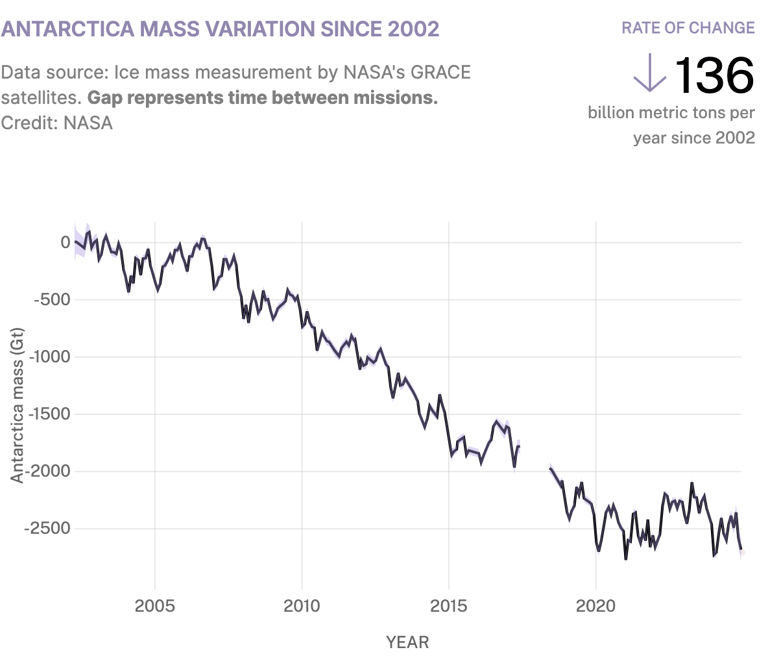

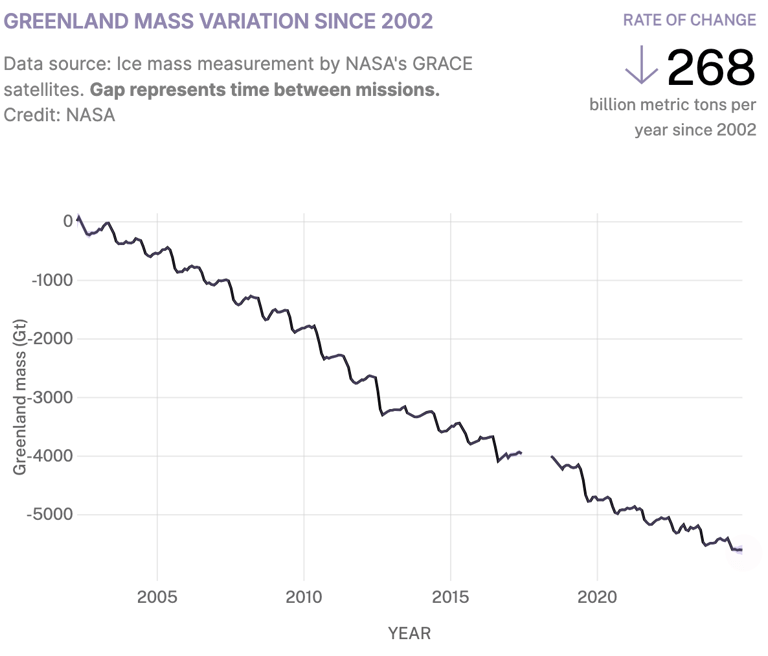

Without this technology: Human displacement and migration. Rising sea levels, extreme weather, and resource scarcity drive mass migration. This gives us climate refugees, potential conflicts over resources, and pressures on urban areas and infrastructure. [Reference: UNHCR on Climate Change and Disaster Displacement (https://www.unhcr.org/what-we-do/build-better-futures/climate-change-and-displacement)]
With this technology: Climate-induced resource scarcity and displacement are often drivers of conflict and forced migration. By preventing these stresses, countries would avoid the political instability that often accompanies resource shortages and mass migration. This would reduce the risk of potential conflicts over shared resources.
Without the technology: Loss of Arctic ice. The Arctic is warming at more than twice the global average, leading to the loss of sea ice and glaciers. This leads to disruption of ecosystems dependent on ice, sea level rise, and the release of methane from thawing permafrost. [Reference: National Snow and Ice Data Center (https://nsidc.org/home)]
Without this technology: Accelerating ice sheet melting and methane release. Warming could lead to the collapse of major ice sheets in Greenland and Antarctica, which would contribute to even more rapid sea level rise. We see a significant increase in sea level rise, faster-than-expected global warming due to the release of methane from thawing permafrost. [Reference: NASA Ice Sheet Melting Research (https://climate.nasa.gov/vital-signs/ice-sheets/?intent=121)]
With this technology: Preservation of global biodiversity. Cooling the Earth would prevent many species from being forced into extinction due to temperature-induced habitat loss. By stabilizing ecosystems, we would maintain biodiversity, which is crucial for resilience in the face of future environmental challenges and for maintaining ecosystem services like pollination and pest control. Reference: Convention on Biological Diversity (cbd.int)]
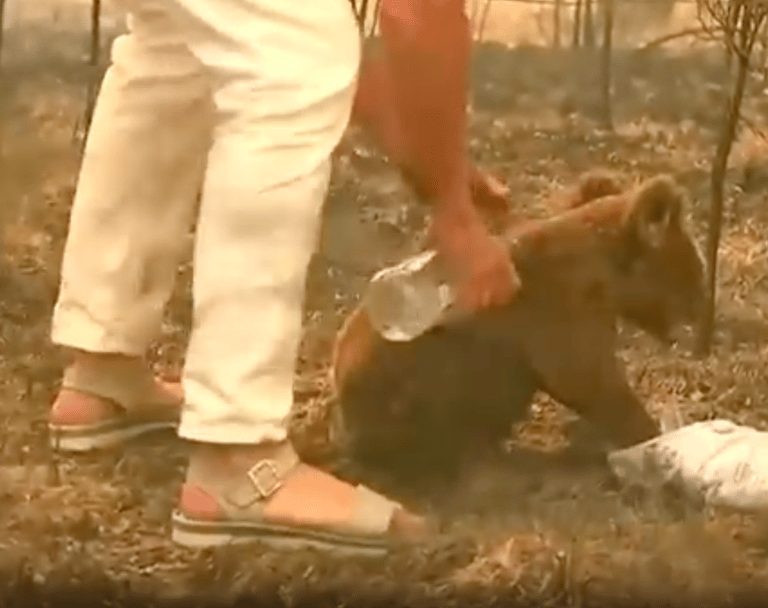

Climate change is making wildfires in Australia more intense and frequent. This is due to factors like increased temperatures, prolonged droughts, and more frequent heatwaves, which dry out vegetation and create tinderbox conditions. The 2019-2020 “Black Summer” wildfires in Australia were particularly severe, and scientific analysis has shown that climate change increased the probability of such extreme fire weather by at least 30%. [Reference: World Weather Attribution (https://www.worldweatherattribution.org/)]
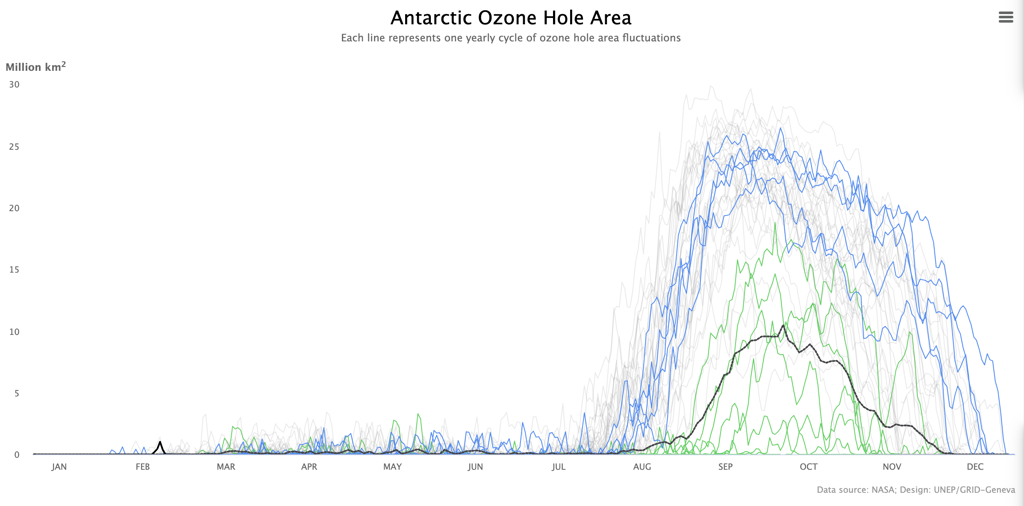

With this technology: Potential to rebuild the ozone layer.
The size of the hole in the ozone has ranged from 0.02 million square kilometers in September 1980 to 29.86 million in September 2000.
The stratosphere is getting colder. This leads to the formation of polar stratospheric clouds. These clouds are critical for the chemical reactions that activate ozone-depleting substances like chlorine and bromine compounds.
The stratosphere and troposphere are interconnected, and changes in one can affect the other.
One of the major impacts of stratospheric cooling is the disruption of the polar vortex, particularly in the Northern Hemisphere during winter. A weakened or displaced polar vortex can cause cold air to escape from the polar region and flow down into lower latitudes, resulting in extreme cold weather events in parts of North America, Europe, and Asia. These events can bring severe winter conditions, including freezing temperatures and snowstorms.
Another impact is the weakening of the jet stream. The weakening of the jet stream can cause more persistent weather patterns, which can lead to longer-lasting heatwaves or droughts in certain regions. When the jet stream is wavy and locked in place, areas under a high-pressure system can experience prolonged hot and dry conditions. This can have serious consequences for agriculture, water resources, and public health.
Changes in the stratosphere can also affect the hydrological cycle, which is responsible for the distribution of water in the atmosphere. The cooling of the stratosphere can influence precipitation and storm systems, potentially leading to: More intense precipitation in some regions, increasing the risk of flooding. Drier conditions in other regions, contributing to droughts and water scarcity.
The cooling of the stratosphere may also contribute to shifts in monsoon patterns, particularly in Asia. A cooler stratosphere can interfere with the tropics and subtropics, where monsoon systems are crucial for agriculture. Changes in these patterns could lead to disruptions in food production and increased vulnerability to extreme weather events.
Just to make it clear: it’s getting colder in the stratosphere because of the hole in the ozone. Ozone reflects ultraviolet light into the stratosphere, which keeps it warm.
Increased concentrations of water vapor in the lower atmosphere due to warming at the Earth's surface can lead to more cloud formation and rainfall. However, the cooling of the stratosphere can also interact with this water vapor, influencing how certain chemical reactions occur in both layers of the atmosphere, including those related to greenhouse gases like methane.
The Arctic is warming at a much faster rate than the rest of the planet, a phenomenon known as Arctic amplification. While this is primarily due to greenhouse gases, the cooling of the stratosphere can also interact with this process, contributing to the polar amplification seen in both the Arctic and Antarctic regions. This can lead to changes in sea ice cover, rising sea levels, and disruptions to marine ecosystems.
We need to warm up the lower and middle regions of the stratosphere.
The amount of heat required to raise the temperature of the stratosphere by 1°C is approximately 9.18 × 10²⁰ joules (J).
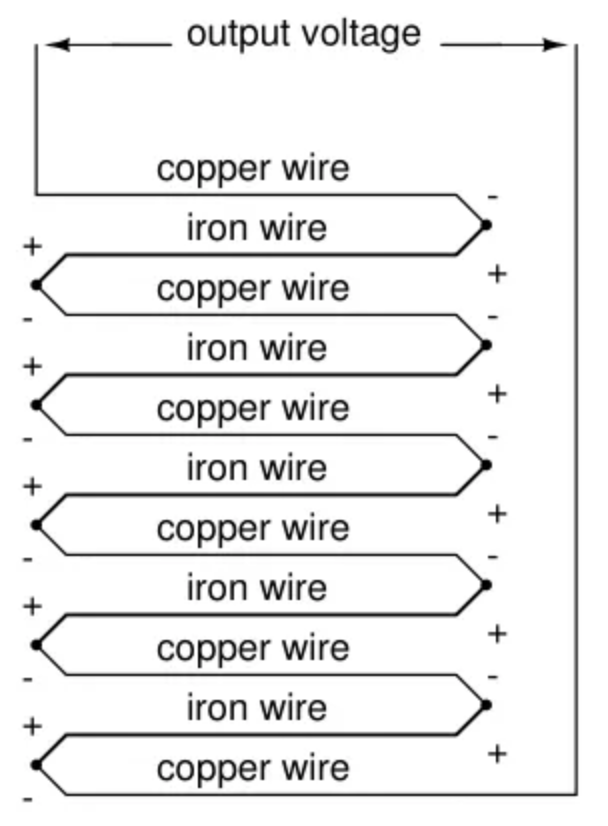

First known use of the technology we’re going to use was 1849. Everyone has this technology in their home. It's in your water heater and it's called a thermopile.
A thermopile works by converting heat into electricity using the thermoelectric effect. It’s made up of many small temperature-sensitive electrical connections, called thermocouples, arranged in a series. Here's a simple breakdown of how it works: A thermopile is made up of many thermocouples. Each thermocouple consists of two wires made of different materials. These two materials are connected at both ends, forming a junction. The key to making a thermopile work is having a temperature difference between the two sides of each thermocouple. One side is exposed to a hotter temperature, and the other side is exposed to a colder temperature. When there's a temperature difference, the electrons in the materials start to move because heat makes the electrons move more quickly. This movement of electrons creates an electric current. This is called the Seebeck effect. The amount of electricity generated depends on how hot the hot side is, how cold the cold side is, and the materials used for the thermocouples. A single thermocouple generates a small amount of voltage, but by connecting many thermocouples in series (one after another), the voltages add up.
The material we are going to use in this technology was discovered in 1962 by Hanns-Peter Boehm. Boehm and others introduced the term graphene in 1986, but it hasn’t been made available until recently.
Graphene is a form of carbon, just like graphite and diamond, but its structure and properties make it stand out from other forms of carbon. It’s incredibly thin—just one atom thick. Graphene’s atoms are bonded together in a flat, hexagonal pattern, similar to a honeycomb structure. Graphene is one of the strongest materials known to science: It is about 200 times stronger than steel by weight. Despite being so strong, it is also incredibly light and flexible. Graphene is an excellent conductor of electricity: It has high electron mobility, meaning electrons can move through it at incredible speeds. Graphene is often considered a superconductor for certain applications because of its ability to carry electric current with minimal resistance. Graphene has extraordinary thermal conductivity: It can conduct heat very efficiently, making it ideal for applications where heat dissipation is important, like in electronics or cooling systems. This property is one reason why graphene is being explored for use in thermal management devices. Graphene is almost transparent: It absorbs only 2.3% of light, making it nearly invisible while still having the ability to conduct electricity. This property is being investigated for applications in transparent electronics or touchscreens. Graphene is not just strong, it’s also incredibly flexible and stretchable: It can be bent, twisted, or stretched without losing its electrical or mechanical properties. This flexibility makes it useful in applications like flexible electronics, wearable devices, or smart clothing. Graphene has a massive surface area: One gram of graphene can cover an area of around 2630 square meters (that’s half the size of a football field y’all). This makes it extremely useful for applications that require a lot of surface area, such as supercapacitors, batteries, and sensors. Graphene is capable of conducting both electricity and heat with high efficiency, making it an ideal candidate for use in various electronics, energy storage systems, and thermal management solutions. https://en.wikipedia.org/wiki/Graphene
To make a thermopile work, the hot end doesn’t need to be super hot, but it does need to be noticeably warmer than the cold end. Typically, the difference in temperature between the hot and cold ends needs to be at least 10°C to 20°C for the thermopile to generate a useful amount of electricity. The temperature difference we’re working with is 40°C (50°C in August).
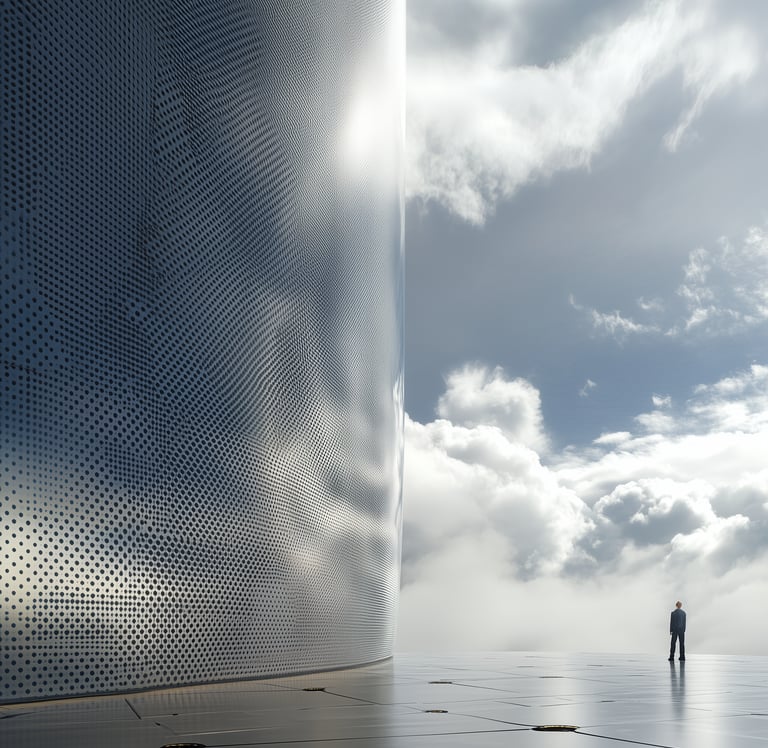

Imagine standing in an expansive open space, with the air humming slightly around you. Directly ahead, stretching into the clouds like a massive, futuristic structure, is the monolayer graphene thermopile. The device is a vast, cylindrical array. The diameter of the cylinder is about 20 feet. The most striking feature of this thermopile is the graphene surface itself. The sheet is incredibly thin—it looks almost like a thin, translucent film, shimmering slightly as it catches the light. The surface seems to radiate a subtle metallic gleam, reflecting a mix of light and shadow as the edges catch the ambient light around it. As you get closer, you notice the graphene’s intricate structure: the monolayer is patterned in fine lines, but the lines are so small and tight that they create a smooth, almost seamless surface. If you run your hand close to the edge, you wouldn’t be able to feel much—it's so thin that it feels almost like a cool breeze or the faintest ripple in the air. The edges of the thermopile are neatly curled or folded around the structure, where it connects back to the support systems.
Upon closer inspection, the surface is not completely smooth. You can make out tiny sensing nodes scattered across the array in dense, uniform patterns, with a subtle metallic sheen around the places where these sensing elements meet the graphene sheet. These nodes are part of the thermopile’s thermocouple array, converting heat energy into electrical signals. The sheet might hum faintly if you’re close enough, as it converts temperature differentials into power.
As you look at the 12.5 kilometers of graphene reaching into the sky, it seems to extend out in undulating waves, bending slightly in places. Even at such a massive height, it feels light and effortless, almost like a futuristic silk tapestry suspended in mid-air, responsive to the slightest temperature changes. There’s a gentle, low hum or buzzing sound emanating from the thermopile, almost like the vibration of energy being harvested. As the device detects temperature gradients, the surface subtly shifts in color—perhaps a slight darkening in some areas and a shimmering silver light where it is more exposed to the sun or heat sources. The entire structure gives off an otherworldly, almost futuristic glow, reminiscent of a highly advanced piece of technology from the future, sleek and minimalistic, while still packed with cutting-edge functionality. Its presence is impressive, both in its technological elegance and in its sheer scale.
This thermopile seems to be a perfect blend of form and function: a sophisticated, high-tech marvel that appears delicate and almost weightless, yet capable of harvesting energy across vast distances.
700 kilograms (1543.24 pounds) is how much the structures reaching up to the stratosphere would weigh if they were pure graphene. Because of the other materials needed, they are going to weigh up to 9 tons.
Distance to stratosphere 12 to 50 km. So we want to cool from 12 to 24 kilometers.
To save the glaciers we’re going to need several cooling structures in Antarctica and several in Greenland:
Total Manufacturing Cost Estimate for a Thermopile High Estimate: Material Costs: $7,790,000 Labor Costs: $250,000 Equipment & Overhead: $7,500,000 Logistics/Shipping: $1,000,000 Total: $16,340,000
Operation Costs: High-functioning Mode (First 270 Days): $823,500. Low-functioning Mode: 24 months: $4,950,000. Total cost for 10 years per Thermopile: $23,717,250
Total melt zone surface area in Greenland is approximately 80,000 km² (19,768,431 acres).
Cooling all the melt zones by 15°C would stop surface melt across the ice sheet. It would prevent meltwater-driven ice flow acceleration. It would eliminate massive melt events like those in 2012 or 2021. Each cooling mechanism will cool 4 square kilometers (988.422 acres) every 24 hours. If we rotate cooling mechanisms daily, it will take 74 of them to cool all the melt zones in Greenland in 9 months.
Because there are about 500,000 square kilometers (123,552,691 acres) melting in Antarctica every year, we would need 463 cooling mechanisms to completely stop the process.
This means a total of 537 mechanisms. For a grand total of 8,782,815,000 dollars to stop the glaciers from melting.
If we have them up by October or November, there will be no melting of the glaciers next year.
Higher albedo from maintaining glaciers could reflect more sunlight, which does help cool the Earth. Ice and snow have a high reflectivity (~0.8–0.9), while melted land or water absorbs more (~0.1–0.4). Preserving these reflective surfaces prevents a warming feedback loop, potentially amplifying the cooling effect over time.
The melting glaciers make up about 0.12% of the Earth’s surface. Cooling 0.12% of the Earth's surface by 15°C would slightly reduce the global average surface temperature — likely around 0.01–0.03°C, depending on atmospheric mixing and energy redistribution.
Once the glaciers are cooled, we would need a maintenance cooling. Instead of moving the cooling mechanisms every 12 hours, we would move them every 3 hours. This would reduce the amount of mechanisms needed at the glaciers to 134. The remaining mechanisms could be moved to other areas on the planet. For example, the Middle East and Northern Africa since these areas are warming rapidly, often 1.5–2.5°C, and are among the most vulnerable due to water scarcity and extreme heat. As well as Central Asia and the Tibetan Plateau which have Warming over 1.5–2°C on average. Melting glaciers and snowpack changes are a major concern for water supplies in these areas. Nodes will be changed on the cooling mechanisms so that instead of cooling by 15 degrees Celsius, they will cool 2 degrees. Since there will be over 400 mechanisms available, they can be strategically placed to cool global temperatures to pre-industrial levels.
To keep the structures moving will require drones. The drone that can lift the most weight and work in the coldest temperatures is the Griff Aviation 300, which is priced around $250,000. This heavy-lift drone is designed for industrial-grade lifting and can carry a payload of up to 500 pounds (227 kg) with a flight time of 45 minutes. Each cooling mechanism will require 16 of these drones. Each mechanism will also require 4 support drones to keep all drones airborne perpetually, including themselves, by swapping batteries. The best option right now is the DJI Mini Fly More Combo at $500 apiece. The DJI has a flight time of 31 minutes. Each battery swap will take ten minutes.
Total cost for drones: $2,150,148,000.
Heavy-lift drones require regular maintenance due to wear and tear on their motors, propellers, and batteries, particularly in harsh environments like high winds and cold weather. Typical maintenance costs could range from $200 to $500 per day per drone, especially when flying in extreme conditions. Operational Costs: High-functioning Mode (270 days): $6,888,075,372. Low-functioning Mode Monthly operational cost: $78,597,468.
537 thermopiles. $17,821,038,372 to stop the glaciers from melting.
Fans are going to have to be used in the stratosphere to ensure the lower and middle stratosphere are warmed and not the upper stratosphere. Manufacturing, deploying, and operating 537 fans (for 10 years) would cost an additional 5 billion. NASA has balloons that can lift 2000kg. Each balloon could hold a fan and the top node of each cooling mechanism. The fans weigh about 1000 kg.
Fans plus operational costs for an additional 9 years and 3 months of cooling other parts of the planet will come out to $13,747,212,698.
To put things in perspective: Hurricane Katrina disaster relief cost us 190 billion. That was in 2005. Climate change contributed to the severity of Hurricane Katrina in several ways. It increased the storm's rainfall and may have contributed to the storm's intensity. Additionally, climate change exacerbated the storm surge, which caused significant flooding several kilometers inland in some places. Higher sea levels, a consequence of climate change, also intensified the impact of the storm surge, leading to flood elevations 15-60 percent higher than what would have been expected based on climate conditions in 1900.
Climate change is worsening hurricane impacts in the United States by increasing the intensity and decreasing the speed at which they travel.
The 32 billion we use for these graphene thermopiles is going to save us 100s of billions, perhaps trillions in the long run. [Reference: https://www.carbonbrief.org/10-years-on-from-hurricane-katrina-what-have-we-learned/ and https://www.c2es.org/content/hurricanes-and-climate-change/]
We have to cool by 15°C because parts of the glaciers in Greenland reach 10°C in the summer and occasionally reach 15°C.
We need to increase the temperature in the lower and middle layers of the stratosphere by 2 degrees Celsius and decrease the temperature of the Arctic by 15 degrees Celsius. We can do this in 9 months by making 12.5 kilometer graphene thermopiles.

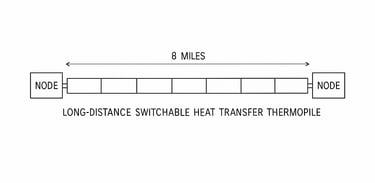
The thermopiles will feature two adjustable modes: High-Impact Mode: Warm environment cools down by 15°C Cold environment warms up by 2°C And Low-Impact Mode: Warm environment cools down by 2°C Cold environment warms up by 1°C. The system increases or decreases thermopile junction density dynamically based on mode selection. Smart sensors modify thermal resistance based on which nodes are used. High-Impact mode will be used in the first 270 days. Low-impact made during the rest of the time the mechanisms are in use. Sections can be replaced if they aren’t functioning properly.
Each cooling mechanism will produce 500 kW of power. That’s enough to power 6 small cities. We can make this a profitable venture by using that energy to mine Bitcoin. We can use ASIC miners like the Antminer S19 Pro (which uses about 3250 watts and delivers around 110 terahashes per second) and costs about $2,500 each. Total Estimated Cost to mine Bitcoin with each thermopile: Material and hardware costs: $3,845,000 Electrical infrastructure: $100,000–$300,000 Engineer design and setup: $50,000–$150,000 Manufacturing/Assembly: $100,000–$500,000 Total: Roughly $4,000,000 to $5,500,000 for the initial setup. We can design and implement a miner using graphene which will mine 7 Bitcoin a year per miner for a total of 3,759 Bitcoins a year. Assuming Bitcoin to be worth $100,000, that’s $375,900,000 a year, but if Bitcoin reaches a price of a million dollars per Bitcoin, that’s $3.759,000,000 a year which means this project will make $3,873,748,930 in ten years. After that the profit from Bitcoin will be over a billion dollars a year, and that’s assuming Bitcoin’s value doesn’t surpass a million.
Mining Bitcoin requires internet. Our best bet right now is Starlink, but there may still be regulatory hurdles and logistical challenges to setting up Starlink in Antarctica. The infrastructure for receiving Starlink signals (e.g., dishes, power supplies, and equipment) would need to be installed at research stations, and the service may need to be authorized by relevant national and international bodies operating in Antarctica. Antarctica's extreme cold and harsh weather conditions can be challenging for electronic equipment. The Starlink satellite dishes are designed to work in a variety of environments, but extreme cold and ice buildup could still pose potential problems, particularly with maintaining signal quality and equipment durability in the long run but we can keep the satellite dishes warm with the Bitcoin miners. Antarctica’s remote nature means that a reliable power supply is crucial for maintaining internet connectivity. Luckily, the mechanisms themselves provide the electricity.
Before any political or logistical work begins, the technology itself would need to be rigorously tested and proven to be effective, safe, and scalable. This would require global research collaboration. Leading climate scientists, glaciologists, and engineers from around the world would need to come together to ensure the technology could work on a planetary scale. Small-scale pilot projects or simulations would be essential to assess the real-world effects of the technology. Testing might involve localized cooling or warming experiments and monitoring their impact on both glaciers and weather systems. A technology of this magnitude would require scientific consensus on its necessity and potential effectiveness. Key international organizations, such as the United Nations Framework Convention on Climate Change (UNFCCC), the World Meteorological Organization (WMO), and the Intergovernmental Panel on Climate Change (IPCC), would play central roles in verifying the scientific claims and risks associated with the technology, as well as establishing guidelines for its deployment, ensuring it doesn't cause unintended environmental consequences.
Global climate treaties and agreements would need to be updated or created to regulate the deployment of this technology. Key areas would include: 1) Governance. A central body or governing body, potentially within the UN or a new international climate coalition, could be established to oversee the technology's development and deployment. 2) Regulations on Geoengineering: There’s already a global debate around geoengineering, with concerns about unintended consequences, fairness, and ethical considerations. A robust legal framework would need to be established, balancing innovation with the precautionary principle.
Every stage of the deployment would need thorough environmental and geopolitical impact assessments, ensuring that local ecosystems or populations are not adversely affected. Political negotiations would be one of the most challenging aspects of implementing such a technology, given the global implications.
There are several political hurdles to overcome. Countries that would benefit from the technology (like those near the poles or that rely on predictable weather) may support it, while others with interests in other industries may resist. Many countries have territorial claims over parts of the Arctic or Antarctic. A global agreement would need to respect national sovereignty and involve extensive diplomatic efforts to ensure fair implementation. The technology could disproportionately affect some regions more than others. Negotiations would have to address issues of climate justice, ensuring that vulnerable nations (e.g., Small Island Developing States) are not left behind or harmed by the technological interventions.
If this technology disrupts industries like agriculture, or shipping (in the case of the polar regions), efforts to transition these industries would need to be part of the plan. This could involve green job creation or compensations for affected industries. Public support would be crucial for the success of this technology. As geoengineering is a controversial subject, gaining broad public trust would require: Transparent Communication: Governments and scientific bodies would need to explain the technology, its potential benefits, and its potential risks to the public. Public consultations and transparent decision-making would be essential. The ethical considerations of manipulating the Earth's climate at such a large scale need to be addressed, with open forums for discussion on issues like unintended consequences, fairness, and long-term sustainability.
Given the scale of such a project, it’s unlikely that a single country could implement it alone. It would require multilateral cooperation. Countries in the Arctic and Antarctic regions would need to lead the way in terms of adopting and integrating this technology, but broader coalitions would be necessary.
Due to the complexity and potential for unforeseen consequences, the deployment would likely need to occur in phases, with close monitoring of outcomes at each stage. This would allow for adjustments based on scientific findings and environmental feedback. Continuous monitoring and adaptation would be key. The deployment of this technology would need to be overseen by international monitoring systems to track environmental and climatic changes, and any unintended side effects, such as impacts on weather patterns, ecosystems, or biodiversity.
In sum, putting this technology into place would require a highly coordinated effort across scientific, political, legal, and economic spheres. The challenge lies in balancing the immense potential benefits with the complex risks and ethical concerns that come with such powerful geoengineering technologies. It would be a test of global cooperation, scientific innovation, and political will on an unprecedented scale.
Can we make this happen?
Definitely. A group of the right people can make anything happen. I recently saw a movie called Cinderella Man about the boxer Jim Braddock. If you’ve seen the movie and you’re like Jim Braddock, you should be a part of this project. If you haven’t seen the movie, here’s the kind of person Jim Braddock is: he’s simply a person who won’t be defeated. There are things in this society and there are things inside of us that can defeat us - things like greed or vanity - and if you have defeated all of them you’re the kind of person that should be a part of this project.
We need to start as soon as possible. It’s going to take time to produce the amount of graphene we need. Also, the cost estimate I gave is high. It could cost less if we use materials other than metal to make the wires in the thermopiles.
You read about all the obstacles this project faces - there are going to be debates so we need great communicators, legal issues so we need great lawyers, I mentioned that we could use a graphene Bitcoin miner, well, we could also design graphene drones that would have longer flight times and higher payload capacities so we need great engineers. It’s going to cost over 30 billion dollars so we need great fundraisers.
If you’re interested in what I’m doing later this year, you should give me your contact information. I'm giving three presentations this year. One of them is another presentation on this technology, but focusing on the conservation aspect - all the animals that are going to be saved. I’m doing a presentation on a method of analyzing data that I developed over the course of several years that I used in 2 fields of science, making significant discoveries in both fields. I’m also going to talk about some of those discoveries in that presentation. The third presentation is going to be on 2 space exploration technologies based on those discoveries that will make space colonization successful, in other words will ensure everyone survives, and will also make generational space travel possible. I might post my schedule on this website or on social media, but the best way to find out what I’m doing is to give me your contact information so that I can tell you. You should also give me your contact information if you’re interested in the story of this project or in the story of the person who conceived it. People would be very interested. If you’re working on a big project and you want someone to talk to that’s doing something similar, please contact me. If you have been looking for a similar mind, let’s talk.
[Presentation that was meant to be given in May 2025]




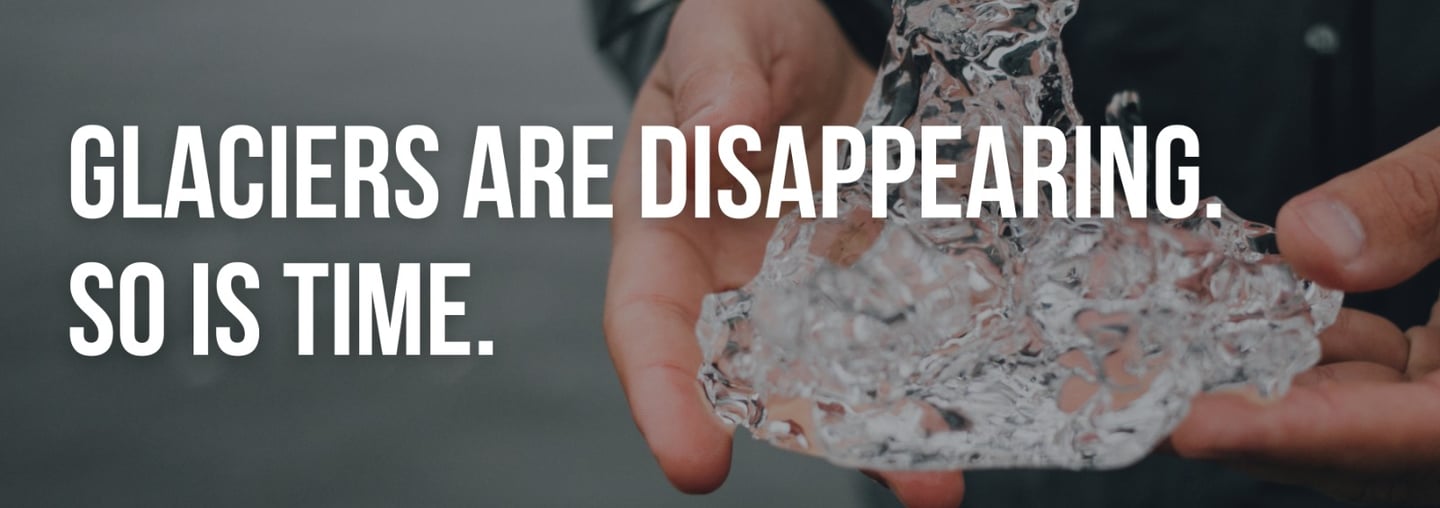

What If We Could Cool the Planet Before It’s Too Late?
We’re losing over a trillion tons of ice each year. Species are vanishing. Extreme weather is already destabilizing lives across the globe. Active Assist is pioneering a real, science-backed intervention not to save the planet, but to protect everything we love about living on it.
This isn’t a warning. It’s already happening.
Glaciers are melting at record speeds. Since 1994, over 28 trillion tons of ice have disappeared accelerating sea level rise, disrupting ocean currents, and altering entire climate systems. The result? Droughts, floods, heatwaves, and fires are becoming deadlier and more frequent, threatening homes, food systems, and lives.
At the same time, we’re facing the sixth mass extinction, with up to 1 million species at risk, not centuries from now, but within decades. The balance of nature is collapsing, and with it, the stability of human life as we know it.
But there is hope.
Active Assist is an advanced planetary cooling initiative created by a team of experts deeply committed to slowing the damage. This isn’t science fiction. It’s a rigorously designed, scalable approach built to give Earth time to heal.
We’re not waiting for governments to act. We’re inviting people who care — creators, media, and everyday changemakers — to help spread the word.
Because the more people know, the faster we can move. And time is running out.
Our technology is:
Non-invasive: It doesn’t interfere with ecosystems or ground-level life.
Scalable and responsive: Designed to activate quickly and be adjusted in real time.
This is not a replacement for emissions cuts. But it is a lifeline, a way to slow the burn while deeper, long-term solutions catch up.
Because if we wait for politics to solve this, we’ll run out of planet before we run out of time.
Why Time Is Everything
Climate change isn’t a distant threat. It’s a present emergency. Every year we delay action, the damage multiplies:
Over 1.2 trillion tons of ice are melting annually
Species are vanishing at unprecedented rates
Extreme weather is pushing millions from their homes
Global food and water systems are destabilizing
We are approaching climate tipping points, moments where change becomes irreversible. If we pass them, no amount of innovation, activism, or money will reverse the impact.
That’s why Active Assist can’t wait. This technology is designed to slow the crisis now, to give nature and society the time they need to catch up.
But awareness is everything. The faster people understand this, the faster we can implement it. We’re calling on creators, journalists, scientists, and communities to help spread the word because every month matters, and every voice counts.
The Story of the Technology That is Going to Save the Planet
Have we got your attention yet? Read more to delve deeper into the technology, why we need it, and how it could make billions of dollars a year.
The Technology: A New Way to Cool the Planet
Climate change is accelerating faster than natural systems can adapt. Traditional solutions like carbon reduction, while critical, aren’t enough to slow the damage happening right now. That’s why we’ve developed a breakthrough Earth cooling technology designed to buy us time and give the planet a chance to recover.
Active Assist uses a simple technology, but at a large scale. It uses no fossil fuels, and it creates free energy.


